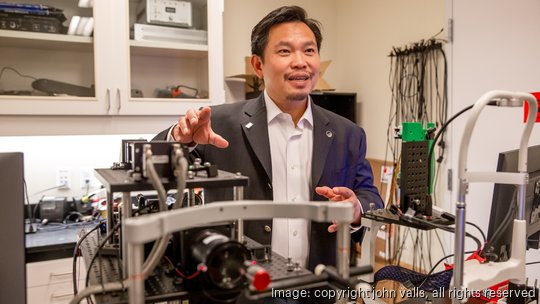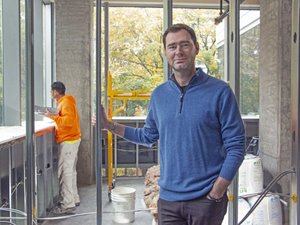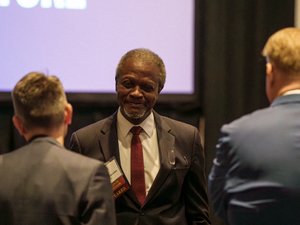
President Joe Biden on Tuesday honored Dr. David Huang, research director of OHSU’s Casey Eye Institute, with the National Medal of Technology and Innovation.
The president placed medals around the necks of Huang and two collaborators, James Fujimoto and Eric Swanson, both from the Massachusetts Institute of Technology, in recognition of their invention of optical coherence tomography. OCT transformed ophthalmology by providing a detailed image of the retina for the first time and is now the standard of care for the detection and treatment of eye disease.
The White House honor came just a month after Huang received a Lasker-DeBakey Clinical Medical Research Award, known as the “American Nobel Prize.” Not only is OCT routinely used to help prevent blindness, but it is increasingly used to diagnose and treat heart, brain and skin conditions.
Huang first co-authored an article on OCT in Science in 1991, two years before he received his PhD from MIT and MD from Harvard Medical School. The technology is now used in 30 million procedures per year. Huang’s article has been cited more than 14,000 times. He has 33 patents, has received five National Institutes of Health research grants and published 300-plus peer-reviewed articles.
We caught up with him Wednesday, while he was killing time at the Watergate Hotel before catching a return flight to Portland.
Congratulations on the medal. Can you talk about that whole experience? It was sort of unreal, going to the White House and meeting the president. He was making little jokes with everyone. At the photo op, he grabbed my arm and said, “Look at the biceps on this guy.” My daughter came up and he asked how old she was. She said she was 19, and he said, ‘No boys until you’re 30, go stand by your dad.” He’s a joker. I found him very charming and disarming and he gave good speeches.
Where is your medal now? They gave us a very nice case. I put it back in the case. We had very short notice, just had eight days. I barely got a seat on an Alaska flight. They had a very small reception with just the laureate and guests that was standing room only. They promised a much bigger party for us next April. I think I’ll come back.
What are you most proud of in terms of the real-world impact of your research? OCT has had a really incredible impact in ophthalmology, especially in retinal imaging. I think it helped the development of an effective treatment for macular degermation and diabetic (eye disease). Together they saved a lot of vision since these were like No. 1 and 2 causes of blindness. Also, it’s the most important way to monitor glaucoma now. That took a little longer. I’m proud that we focused on the retina from early on. We had the technical advance of developing an instrument well and recognizing this is the most promising clinical application, without knowing a lot about eye diseases. We were engineers, all three of us. We did have good collaborators in retinal disease and glaucoma from Harvard Medical School, which helped.
Where are you going with your research next? Another thing that I want to work on in my research group is to apply OCT in the eye to detect neurological and cardiovascular diseases, including multiple sclerosis and Alzheimer’s, so neurological degenerative diseases in general, and using the eye as a window to systemic blood flow, coronary and carotid heart disease. That’s some of the research. OCT is in all the eye clinics already, and I hope to see it commonly used in all the primary care clinics as well in medicine in general. Some people think we should put OCT systems in people’s homes to scan themselves, but I think that’s probably not feasible.





